Employee Experience
360 Degree Appraisal Format: 9 Types + How to Use Them
Article written by Parvathi Vijayamohan
Content marketer at SurveySparrow.
11 min read
19 September 2025

To conduct successful 360 degree appraisals for your firm, you need a 360 degree appraisal format. But to know what to ask, you need to know when to ask it.
In this blog we will:
- Define a 360 appraisal format
- Explore 9 types of 360 feedback formats
- Understand how to present this data using 360 appraisal reports
- Answer common FAQs about 360 degree appraisals
What is a 360 degree appraisal format?
A 360 degree performance appraisal combines anonymous, direct feedback from the employee’s self-evaluation, manager, team members and direct reports. This feedback rates an employee on their performance in areas that are vital for the company – like leadership, communication, tech skills, integrity and so on.
The resulting report provides a more comprehensive view of the employee’s skills, strengths and weaknesses compared to feedback from a single source.
Related: 360 Performance Review: Everything You Need to Know
Types of 360 appraisal formats
- For employees
- For managers
- Culture assessment
- Open-ended assessment
- Problem solving competency
- Interpersonal skills
- Communication skills
- Sales team
- Leadership team
Employee 360 appraisal format
Scenario: When you want to evaluate your staff on their leadership skills, communication and more.
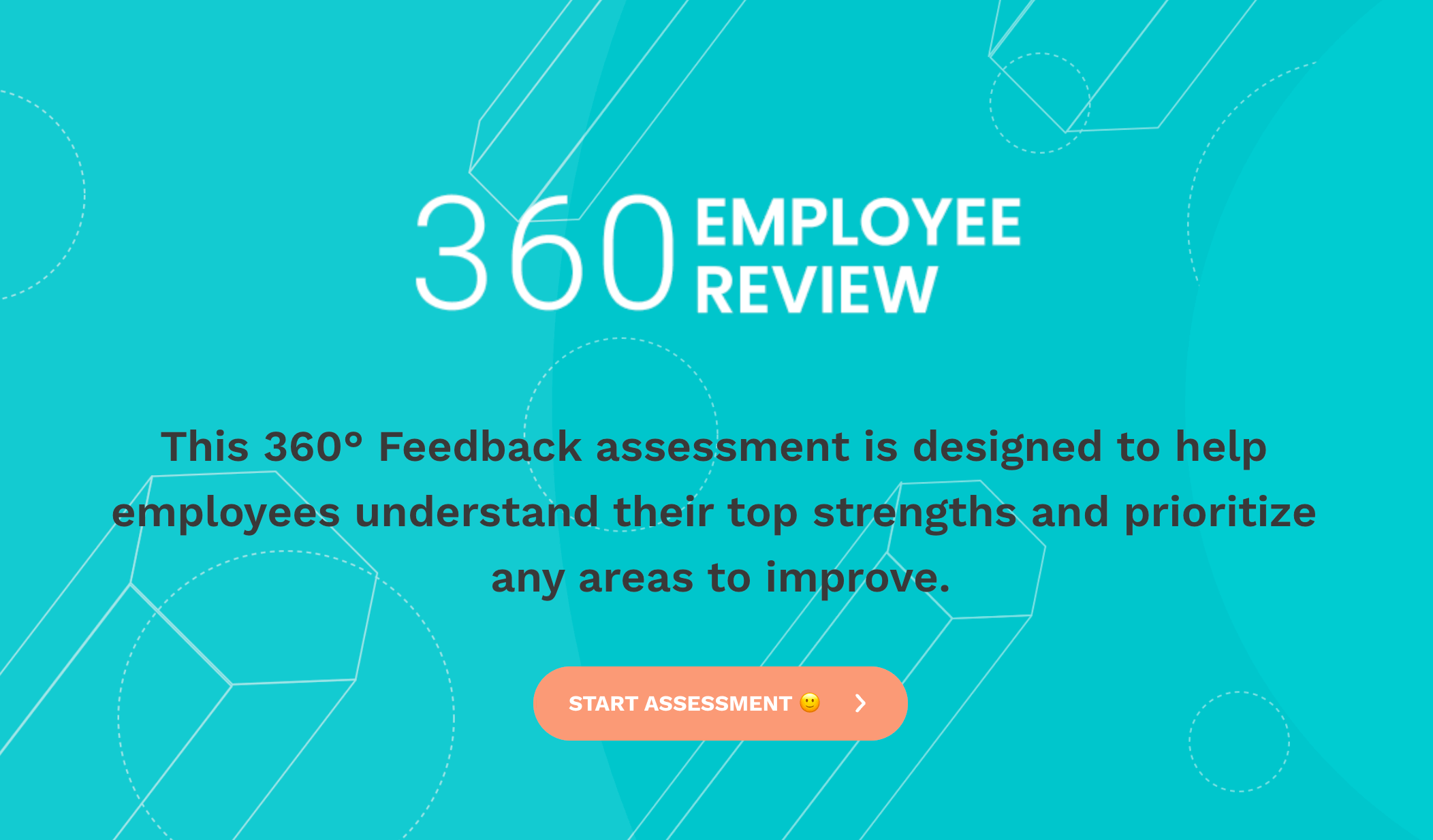
What this format does: Employee 360° review templates help you learn more about your employees, especially from perspectives that usually go unheard. You can also customize the form to measure values that are central to your work culture.
Manager 360 appraisal format
Scenario: A comprehensive evaluation of managers by staff.
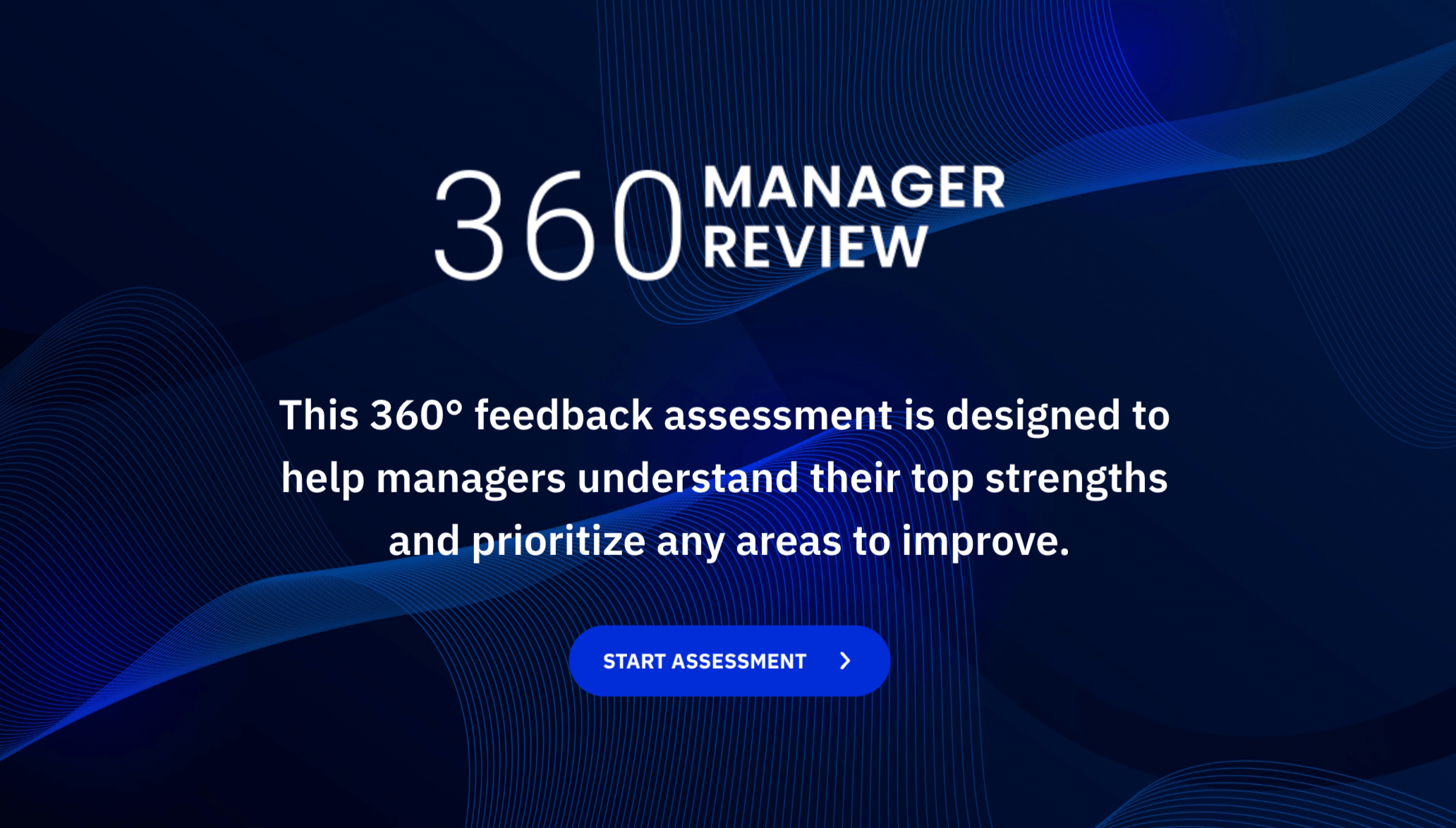
What this format does: According to a recent survey by Gartner, developing managers to be more visible, empathetic, and connected are a top priority for 60% of HR leaders. So this 360 survey format can be quite helpful for discovering the kind of training your leadership needs.
360 culture assessment format
Scenario: Gauging how much an employee feels like they belong within the company culture.
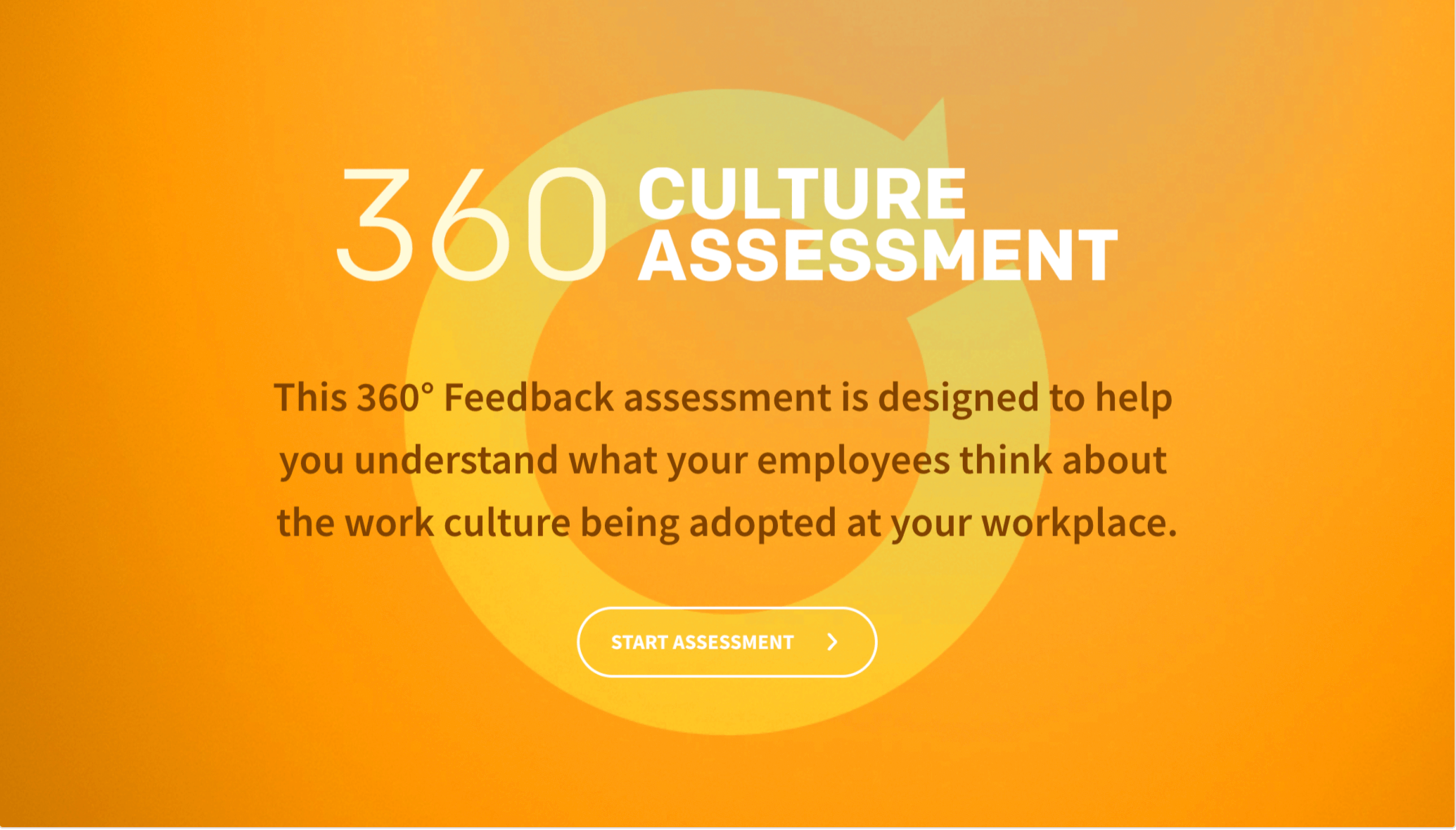
What this format does: The team is the subatomic unit where culture lives, thrives or dies. This anonymous, peer-review format helps you get honest feedback on whether your employees feel like they belong with the current culture – and what you can do about it.
360 degree appraisal format for open ended feedback
Scenario: Capturing more nuanced insights like feelings, opinions and sentiments.
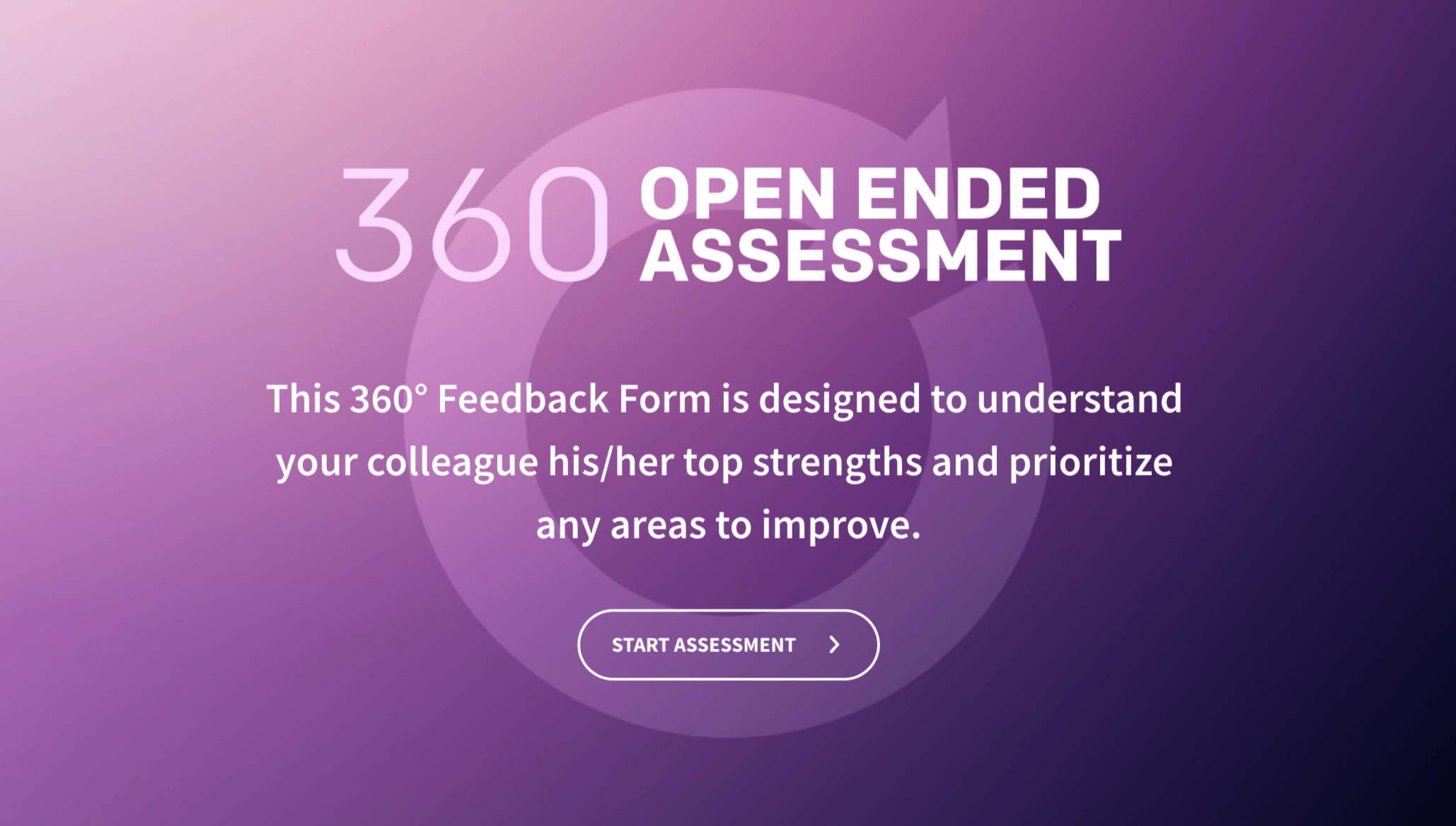
What this format does: While opinion scales are good for keeping score, open-ended feedback can deliver new, often unexpected insights about your workforce. Moreover, open-ended feedback in the form of comments and examples act as evidence to support the ratings. This 360 degree feedback format allows you to structure your appraisal form as a series of open ended questions.
360 assessment for problem solving competency
Scenario: Assess an employee’s capability for critical thinking and problem solving.
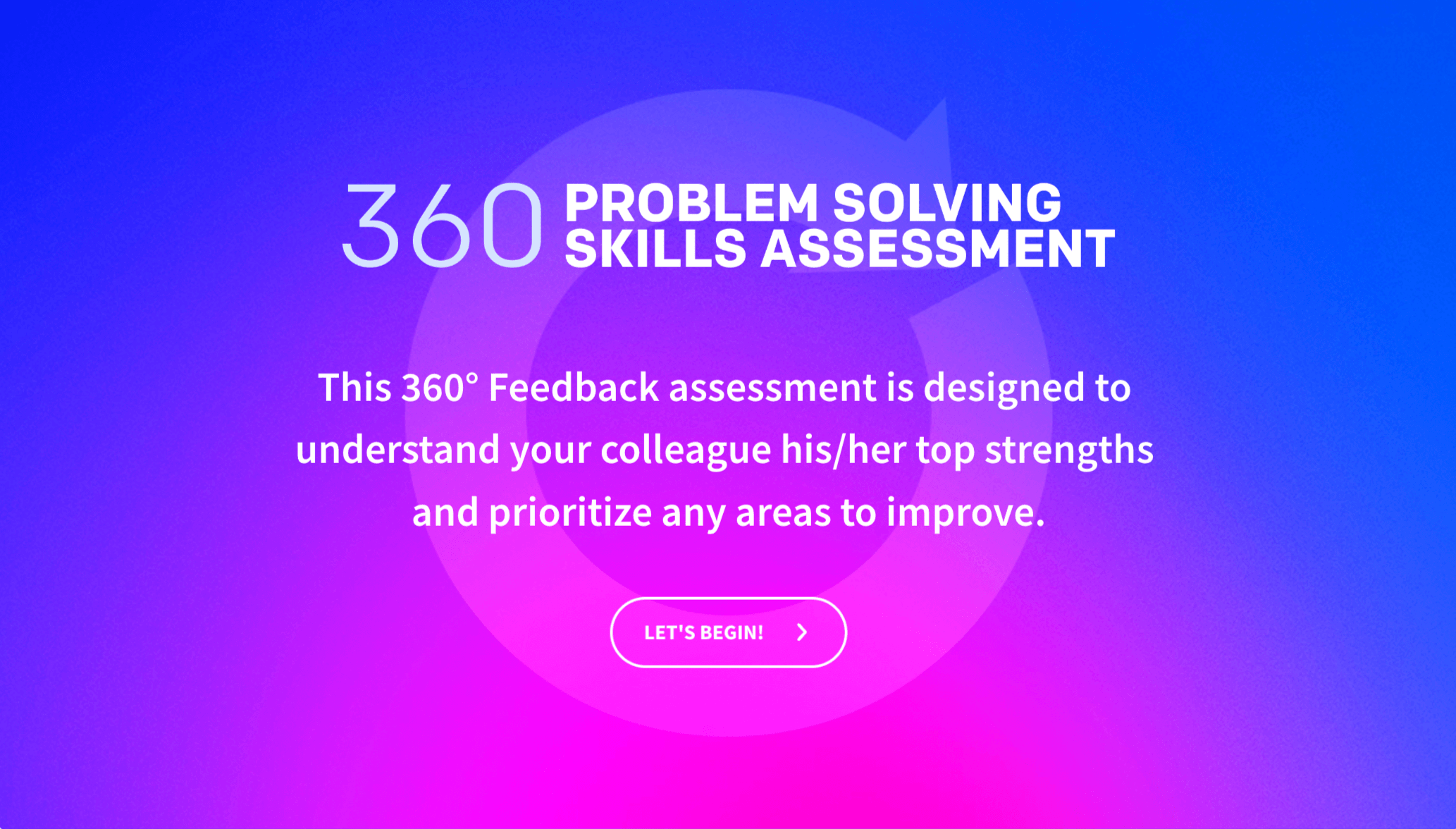
What this format does: There are many components to problem solving. But like all skills, they can be learned with a little bit of training and practice. So if problem solving is a do-or-die skill for your business, then this 360 questionnaire helps you measure this competency in a more detailed way.
360 survey for interpersonal skills
Scenario: Determine an employee’s people skills – how well they interact and work with others.
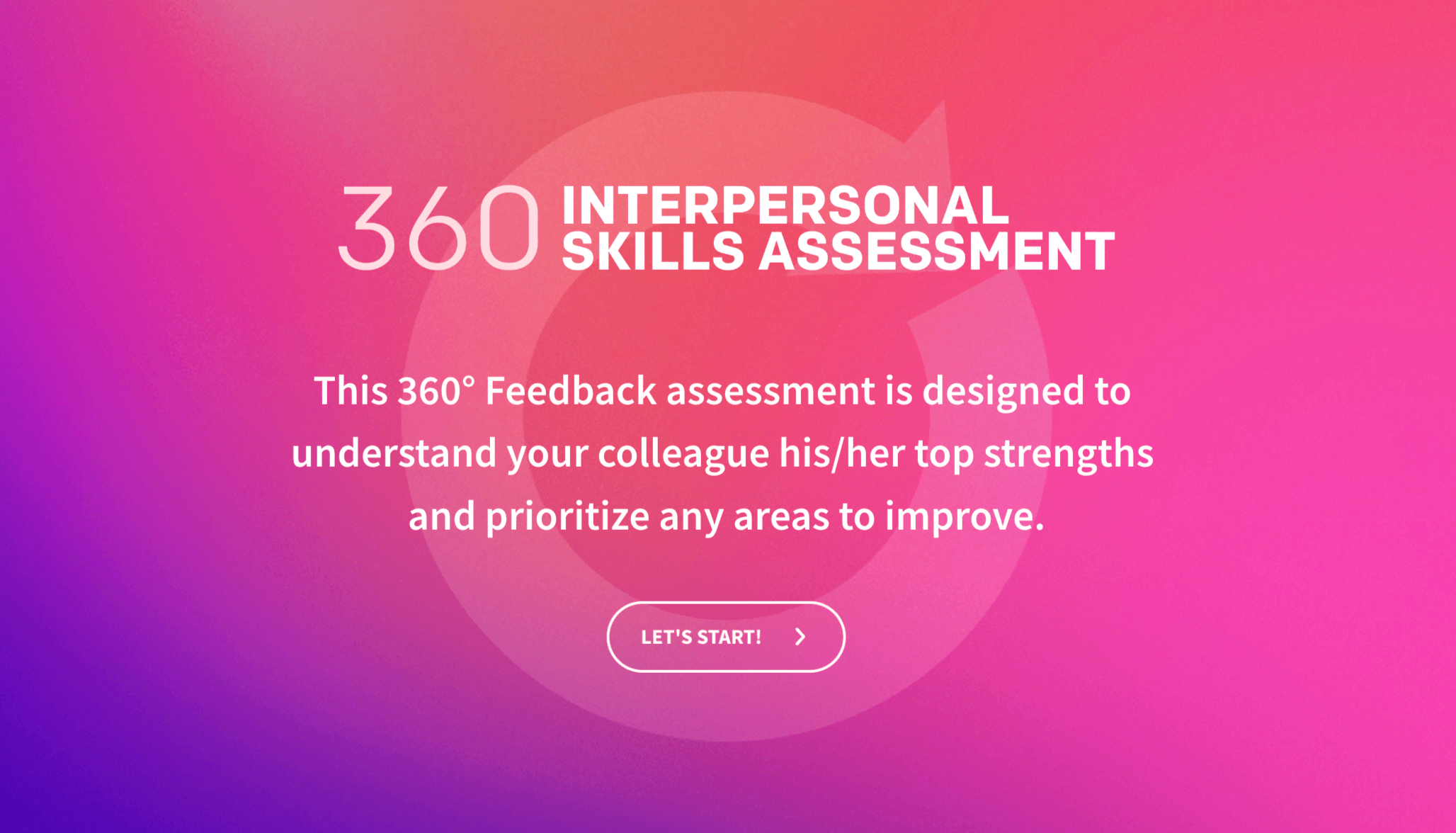
What this format does: Did you know that there are at least 20 people skills you need to succeed at work? While these may be summed up as ‘empathy’, ‘likeability’, etc., this 360 feedback format lets employees objectively rate their peer on these interpersonal skills, and others as well.
360 survey for communication skills
Scenario: Gauging how effective an employee is at communication.

What this format does: Google “communication skills” and you’ll be deluged with articles, blogs and videos talking about the types of communication you need to succeed in the workplace. This 360 degree survey format is based on peer reviews, and helps you drill down into the specifics of what makes an employee an effective communicator.
360 degree appraisal format for sales teams
Scenario: When sales managers want to drive behavioral change within their teams.
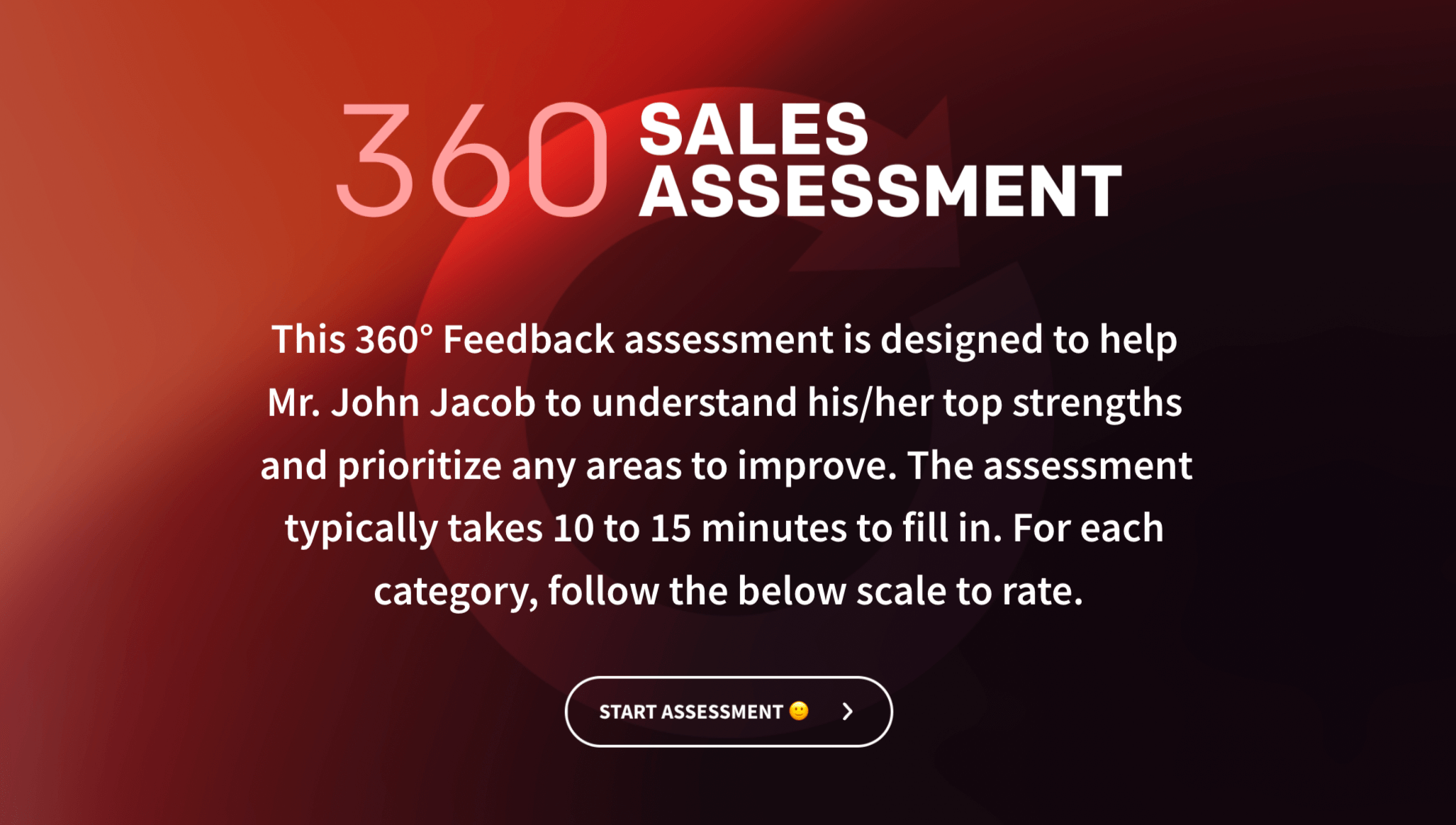
What this format does: The peer reviews from these 360 surveys can also help you recognize issues that are collectively affecting your sales team. It also helps you assess how well you are implementing your sales training and highlights how your sales workflows are going.
360 degree appraisal format for leadership
Scenario: Measuring key leadership behaviors for a successful business performance.
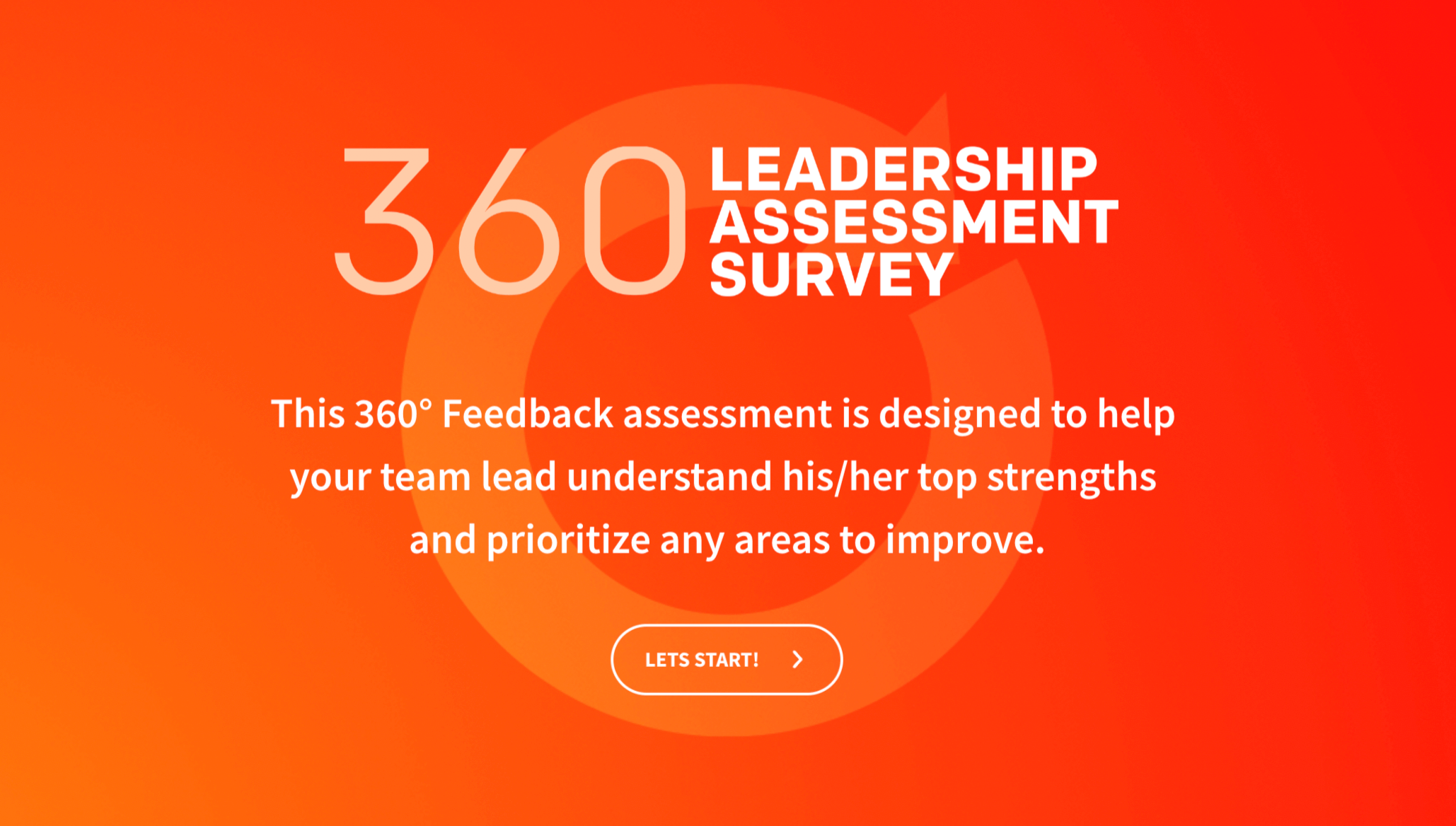
What this format does: A leader’s effectiveness is based not just on their job skills, but also on their soft skills such as communication, empathy, negotiation and body language. This 360 appraisal format gives your leaders better insights into how they are perceived – including the strong points and blind spots in their leadership style.
Keen to get started? You can start with one of our readymade 360 feedback forms and customize it with SurveySparrow to create the best 360 degree appraisal format for your needs.
How do you write a 360 feedback report?
The reviews are done and the data is ready. Now, how do you go about creating 360 reports for all of the participants?
- Start with a clear introduction that explains the purpose and objectives of the report. This should set the stage for the rest of the report.
- Include a summary of the feedback, highlighting key strengths and areas for improvement. This should be based on the data collected from multiple sources, such as colleagues, managers, and subordinates.
- Use specific examples or comments to support the feedback given. This helps to bring the feedback to life and makes it more meaningful.
- Organize the report into sections, with each section focusing on a specific competency or behavior. This helps to structure the feedback and makes it easier to digest.
- Provide actionable recommendations for improvement. This should be based on the feedback given, with specific suggestions for how the individual can develop their skills and behaviors.
- Conclude with a summary of the key points of the report, and an overall assessment of the employee’s performance.
Remember to keep the tone positive and constructive, focusing on how the individual can improve rather than just criticizing their performance.
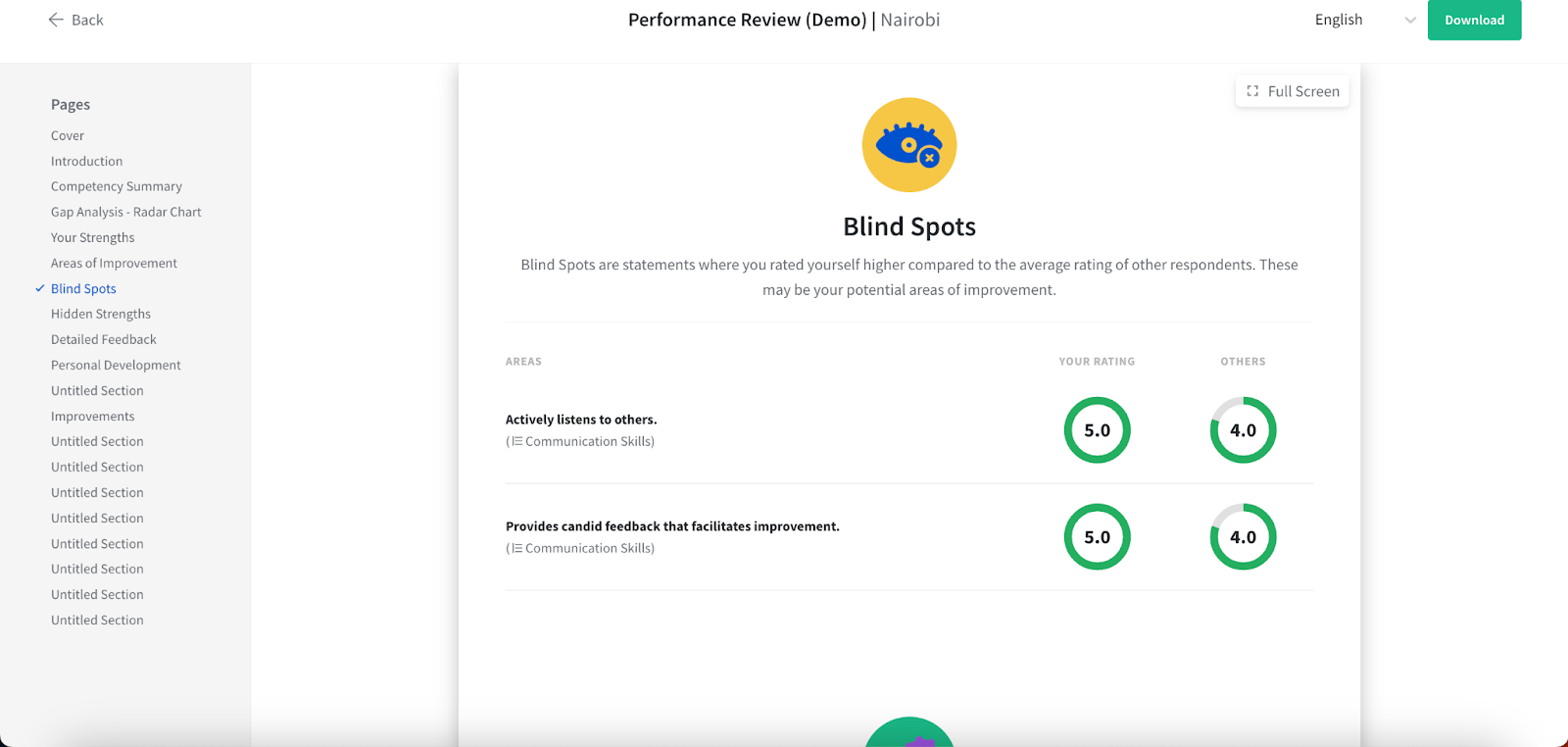
360 degree appraisal format: FAQs
What are the four components of 360 degree appraisal?
A 360 performance appraisal always has four components:
- Self- evaluation
- Manager’s evaluation
- Evaluation by subordinates or direct reports
- Peer evaluation
All of these appraisals are clubbed into one feedback report that outlines the employee’s strengths, weaknesses, hidden strengths, and blind spots. However, depending on the role and organization, it can also include a fifth component: customer feedback.
How do you write a 360 feedback form?
To write a 360 feedback form, follow these steps:
- Start by figuring out what you want to achieve with the feedback. What behaviors or skills do you want to evaluate? Then you can design your feedback form to focus on those specific areas.
- Think about who you want to get feedback from. It could be colleagues, managers, subordinates, or even customers, depending on what you’re trying to assess.
- Write clear, concise 360 review questions that are easy to understand and answer. Try to use simple language and avoid industry jargon.
- Use a mix of open-ended and close-ended questions to get both detailed feedback and specific answers. Consider using rating scales for some questions to make it easier to compare feedback across multiple sources.
- Make sure your feedback form is anonymous to encourage honest responses.
- Test your feedback form with a small group of people to see if there are any issues or areas for improvement.
- Once you’ve collected your feedback, use the data to identify areas for improvement and create an action plan to address any issues.
How do you complete a 360 appraisal?
A 360 degree appraisal is always completed with a meeting between the manager and employee to discuss the feedback. It is structured as an open and honest discussion, and focused on the employee’s needs. The meeting should conclude with a discussion about the next steps to take for the employee’s growth.
How do you structure an appraisal?
360 degree appraisals are usually structured this way:
- Establish the criteria for reviewing each employee.
- Select the evaluators for each employee.
- Set a start date and deadline for the 360 appraisal.
- Formally announce the appraisal process in your internal channels.
- Share the 360 survey. With 360 tools like SurveySparrow, you can choose to make the evaluator’s feedback anonymous.
- For self-evaluation, send the same survey to the employee.
- Enable your managers to have 1:1 meetings with each employee to review the 360 report.

Get upto 40% more responses on your employee surveys. Start your free trial today!
Parvathi Vijayamohan
Parvathi is a sociologist turned marketer. After 6 years as a copywriter, she pivoted to B2B, diving into growth marketing for SaaS. Now she uses content and conversion optimization to fuel growth - focusing on CX, reputation management and feedback methodology for businesses.
Related Articles

Employee Experience
6 Effective Employee Experience (EX) Examples to Learn From
15 MINUTES
22 November 2020

Employee Experience
12 Powerful Exit Interview Questions HR Pros Swear By
12 MINUTES
24 September 2018

Employee Experience
Employee Feedback Examples: 9 Actionable Tips in 2024
9 MINUTES
19 August 2020

Employee Experience
7 Effective Employee Retention Strategies to adopt
15 MINUTES
20 March 2021
